Purchased with a faulty foundation for $1.925 million in January of last year, plans to demolish the little 1,270-square-foot Noe Valley home at 228 Vicksburg Street were soon drafted by E.E. Weiss Architects. And as proposed, a four-story, 6,325-square-foot building could rise up to 40 feet in height on the RH-3 zoned lot, with three two-bedroom condos over a 789-square-foot garage for two cars and three bikes.
While opposed by ten neighbors and the “Noe Neighborhood Council,” all of whom have voiced objections ranging from the loss of the existing structure and a backyard tree to the scale and mass of the proposed new building, its impact on neighboring units’ light and air, the affordability of the new units, and the lack of an off-street parking spot for all three units, San Francisco’s Planning Department is recommending the project be approved this week, noting that the proposed new building is “Code-complying and designed to be in-keeping with the existing development pattern and neighborhood character of the neighborhood.”
And while the project would require the demolition of an existing residential unit, for which a Conditional Use Authorization needs to be approved, “the Project would create a total of three new larger units and a total of three additional bedrooms on the site, thereby maintaining the maximum allowed density at the Project site while creating additional family-sized housing,” per Planning, and “[wouldn’t] be detrimental to persons or adjacent properties in the vicinity,” a determination with which a number of neighbors disagree.
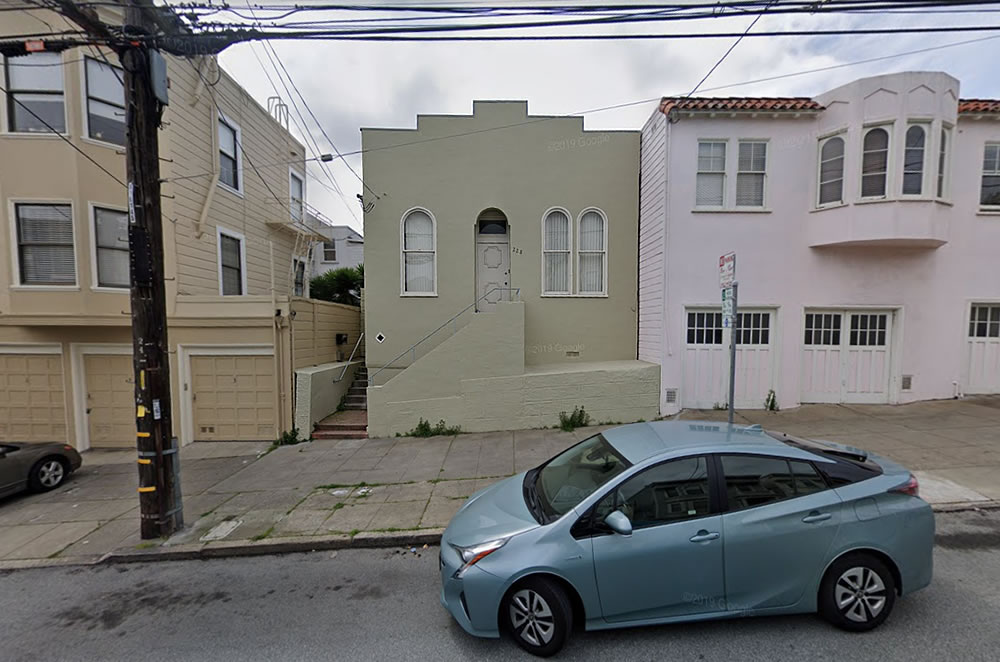
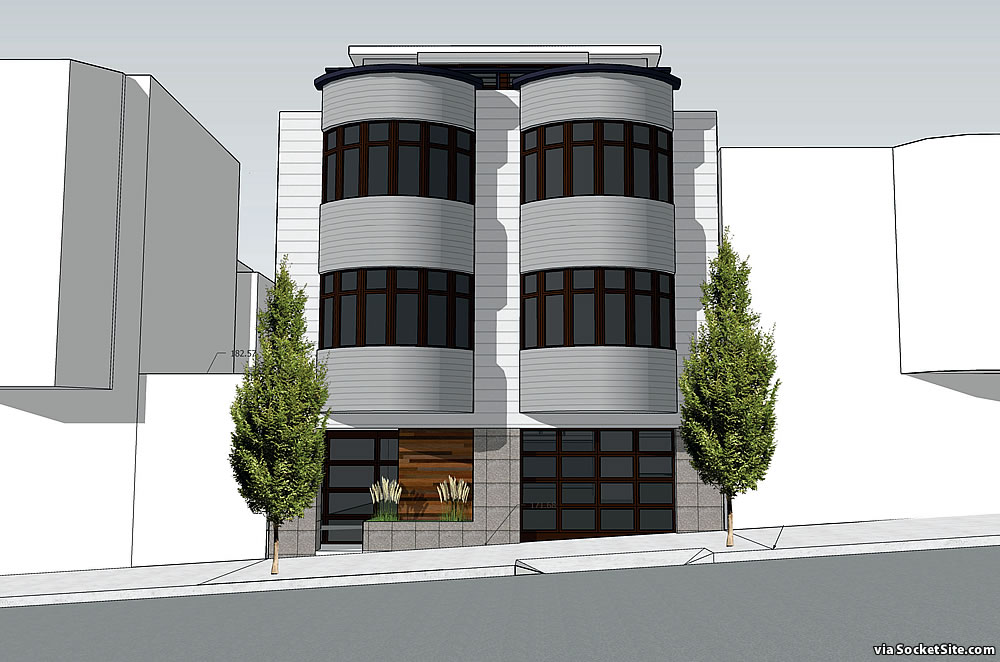
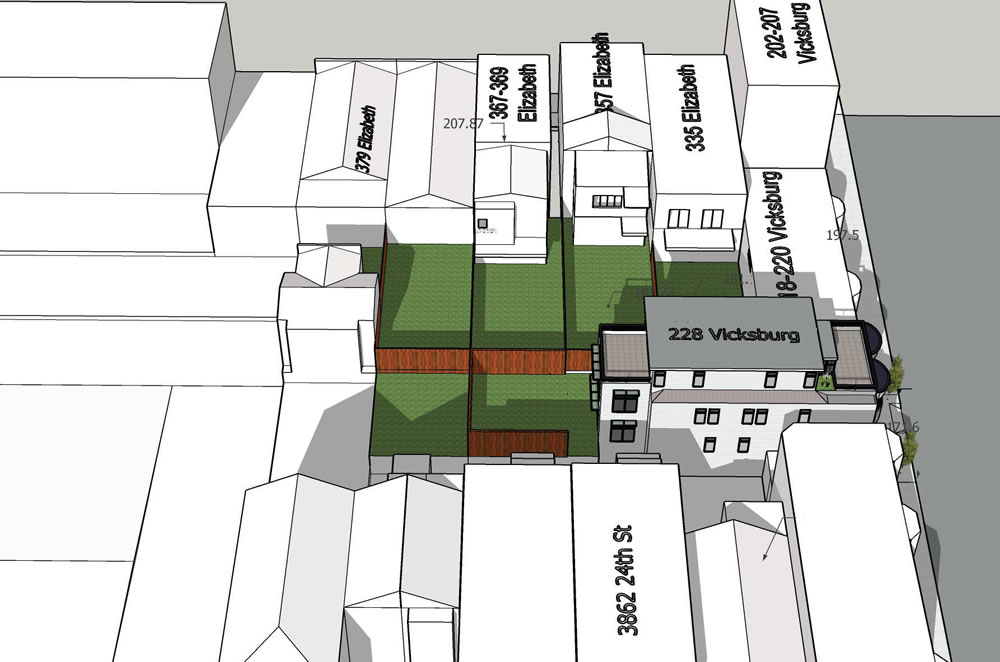
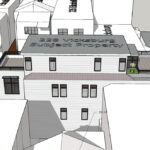
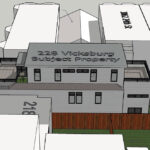
The new standard for bay windows in SF. Here to stay for the next 100 years.
$2M for an uninhabitable death trap (in an earthquake). My god.
$2M for a 2,900-square-foot Noe Valley lot zoned for the development of a three-unit building, rising up to 40 feet in height.
That ground floor resembles eerily the Schaub Ly architectural voids created for other similar infill projects using substandard design and rendering of the ground floor holes created..
Bravo to Planning for sticking to their guns, and to Socketsite for continuing to highlight them. These projects being approved will continue to embolden more and more people to attempt them.
SF needs to go from being mostly 1-3 stories to being mostly 3-6 stories (with plenty of 10+ sprinkled in of course). Here’s hoping these kinds of projects begin accelerating in frequency.
The same neighbors who whine and complain about lack of housing don’t want a multi unit house built near them. Selfish. Small minded. Selfish. Entitled. Build it .
No need to insult. The people I know who are against development near them are rather consistently against development period, pointing out that Austin seems to be a very welcoming place. They are not hypocritical. They are holding onto a SF that is disappearing, but that’s probably going to be everywhere in this world as long population increases, and housing is needed. At the other end of the spectrum is China moving people out of their family villages to flood them for hydroelectric power and moving them into 50 story buildings. I mean, you gotta do it right? 1 billion people and all. How small minded and entitled of those people to resist and complain.
This project seems fine. I do wonder about the lot-line windows, does the project have air rights or can those neighboring lots be redeveloped one day to ironically block those windows?
This looks great. Happy to see more housing units close to the main strip of Noe Valley.
More housing is good thing. Build it. The current building – is a run down dump.
Verdict good. Building design bad. Do better.
If neighbors are so concerned about affordability of the proposed development, then they would be ok with section 8 housing built here?
Build it
The standard parade of Noe Valley Pensioners Against Change will give their usual we need housing but not this housing speech. Year after year this bullsh*t goes on and on.
With the amount of space dedicated to car storage (~600 sq. ft.), one could instead have a an ADU or a fourth unit (if permitted) with no additional visual impact for the neighbors. Especially in light of the threats climate change poses for all of us, we continue to place too great of a priority on providing housing for cars instead of people.
Idealism vs realism. The reality is that this developer is here to make money, and including parking for two of those units will likely make them more money. For running errands, for visiting friends in the East Bay, for getting to work, for going hiking in Marin or to Wine Country, the Bay Area is undoubtedly better with a car. The reality is that not having parking is a dealbreaker for many people. It’s almost insulting to pay 1.5M and not get a place to park.
I agree with you that parking should slowly be squeezed out, and that there should be many more units without parking. Note that in this building, one unit doesn’t get a spot. Many more buildings are being built without parking. The tide is turning in your favor but it will take decades.
Stating the obvious here, but we don’t HAVE decades. Keeping climate change impacts relatively livable for most people requires reducing emissions much faster than a car-centric transportation system will allow. Yes, even with electric cars (and their high overall lifecycle emissions).
Actually lifecycle emissions for electric cars are not high. They are low and getting lower. There are many bigger targets which are far more polluting.
Doing something about climate change is very important but we should be taking action on the big stuff, not the small stuff.
What I interpret your comment to mean is we need more people on transit which requires better transit which requires investment in MUNI frequency and soon. This chain of thought leads me to wonder… are there specific outlays that developers must pay to transit in the case with small developments like the one above? Seems like if a the market is so car-centric it would be wise to leverage that in favor of the public good of transit. (Open question to the audience. I am clearly no wonk but rather a young & curious resident.)
I interpret Scott F’s comment to be a great example of how some people can’t accept the good in the absence of the perfect, and how those two categories can sometimes be enemies. The fact of the matter is that even if electric cars had high overall lifecycle emissions (they do not), those emissions would be and in fact are lower than internal combustion engine vehicles, so a mass switchover to electric cars would be a massive reduction in overall climate change impacts of the transportation system.
Scott’s comment would lead you to believe that he is unware that the most sold vehicle in 2019 was the Ford F-Series of trucks, primarily the F-150, and of the Top-10 vehicles, another 7 are either Trucks or SUVs, and all of them had an internal combustion engine. That is the reality.
Sure, it would be perfect if everyone used public transit, but if you look at the real world ridership levels and outward migration from cities like S.F., people not blinded by their urbanist triumphalist ideology will understand that if parking becomes unavailable, the more likely scenario is that more people will move to outlying areas and work from home, and go out and buy an F-150 or a Chevy Tahoe, instead of living in The City at all. Especially now that WFH has been validated and more companies are trying to reduce their fixed costs due to S.F.’s overinflated commercial rents.
I say that as someone who rides public transit, and before the pandemic commuted by bicycle multiple times per week. But I am not the kind of person in the market for a million-and-a-half dollar townhome in Noe Valley.
Climate change isn’t going to be addressed by reducing parking in order to prod people to use public transit, because many affluent people of the type who can afford to purchase million-and-a-half dollar townhomes in Noe Valley can and will move to avoid being forced to use public transit. If outward migration to avoid being forced to use public transit happens, that will be a huge negative climate change impact in and of itself. So it would be — I would say, “good” — from a climate change perspective to applaud and support a mass switchover of urban residents to electric cars as opposed to more people moving to the suburbs and continuing to drive trucks and SUVs.